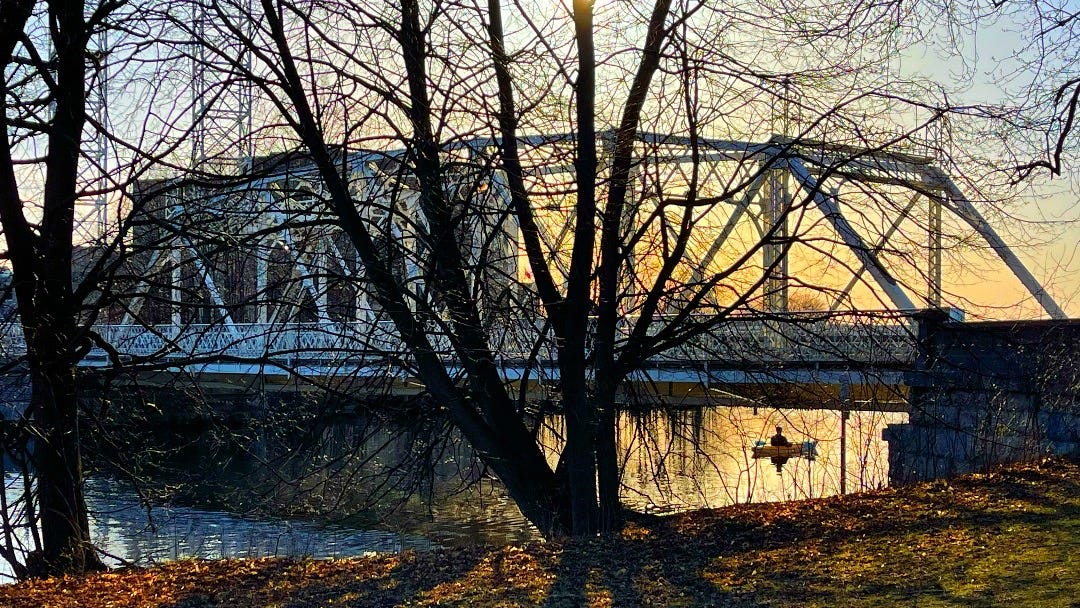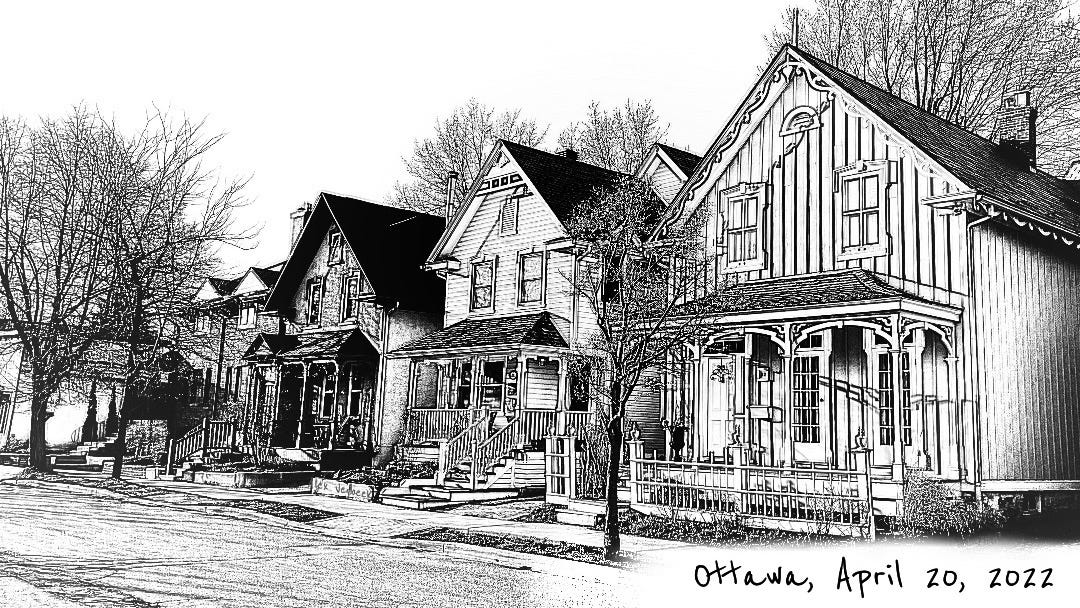A short walk through the history of New Edinburgh
The diverse architecture in one of Ottawa's oldest neighborhoods
After yesterday's snow and cold, today was surprisingly pleasant spring weather in Ottawa; I made good use of it by walking around in one of the capital's oldest neighborhoods, New Edinburgh. It was founded by Thomas McKay, one of the builders of the Rideau Canal lock system.
He bought the land at the junction of the Ottawa and Rideau Rivers in 1829 and created a village named after Edinburgh in his native Scotland. The streets in the neighborhood are still named after McKay's family. The area had been initially industrial and was home to several mills using the river's power, but it is now a pleasant neighborhood to explore, mainly because of its architecture.
Thomas McKay
McKay was born in Perth, Scotland, in 1792 and trained as a mason. After he married Ann Crichton in 1813, the couple immigrated to Montreal in Canada. Colonel John By chose him in the fall of 1826 to conduct the masonry work on the canal's eight entry locks, which would connect Bytown on the Ottawa River to Kingston on Lake Ontario.
McKay did more than build these beautiful locks that are still worth a visit. A few years after his arrival in what would later become Canada's capital, he began purchasing land, eventually amassing over eleven hundred acres. Soon after, in 1830, he began constructing his hamlet, and McKay urged former canal employees to relocate there.

The diverse architecture of New Edinburgh
Walking through this old neighborhood, it is a pleasure to see the rich diversity of architectural styles and building types. Examples from each period of New Edinburgh's development still exist.
Houses constructed during the early part of New Edinburgh's initial settlement were generally wood or stone, reflective of the skills and building practices of the early settlers. Until the mid-1800s, homeowners favored the use of stone or brick over timber, which denoted a lesser status. But with the mills located close by, lumber became the material of choice.
Architecturally, the houses bear witness to the availability of decorative wood elements produced by machines at the nearby sawmills. If you are ever visiting Ottawa, it's nice to stroll through these old streets and admire the architecture.
I write these newsletters, share my photos, do interviews, make podcasts about the environment, and share my travels because I believe that together we can do better on this beautiful but fragile planet.
If you are a paying subscriber: thank you for your support!
Please consider supporting this initiative by taking a paid subscription if you are not.
The Back Page
Tomorrow's podcast with Alister Doyle (tomorrow means for me: Thursday, April 21, which has already started in most of the world, it is past 11 p.m. here in Ottawa) will, like every week, begin at 3 p.m. ET. And like every week, we will look back at last week's news about the environment and anything else that we believe is interesting.
You can listen to the live recording here: https://callin.com/link/VLYGzIbfOs
If you listen via the Callin app on your smartphone, you can join the conversation.
You can follow my podcasts here: https://www.callin.com/user/alex_verbeek
This is the link to The Planet podcast (interviews with experts)
And this is the link to all other podcasts, published in “News, the bigger picture".”
notes:
https://www.historicplaces.ca/en/rep-reg/place-lieu.aspx?id=8447
https://www.newedinburgh.ca/our-history/
https://ottscot.ca/new-blog-1/2020/11/5/new-edinburgh-ottawas-scottish-village







What a welcome surprise to wake up to. Thank you.
How nice to see another Alexnote (and, I found it! ;-)). Looks and sounds like you had a lovely walk. That bridge with the kayak - you did make me look up the difference between a kayak and a canoe - nicely captured.
I love architecture and that definitely looks like a place I should go walk around in, if I ever make it to Ottawa. Thanks also for the history lesson. The name "bytown" made me smile. I realize that it was named after that colonel - it's just the historical linguist in me reads that as "towntown".
What a pleasure to see your article and this wonderful Alexnote sketch. I love the architecture of these charming houses. A step back in time when homes reflected a certain character and individuality. They seem to have withstood their age very well.
Thomas McKay certainly left his mark on Ottawa. An interesting history.
The late afternoon sun on the Minto bridge with the lone kayaker is a lovely photo. And your sketches are always a special treat.
So nice you were out on this spring day. Thank you for this treat. I’ve missed Alexnotes.